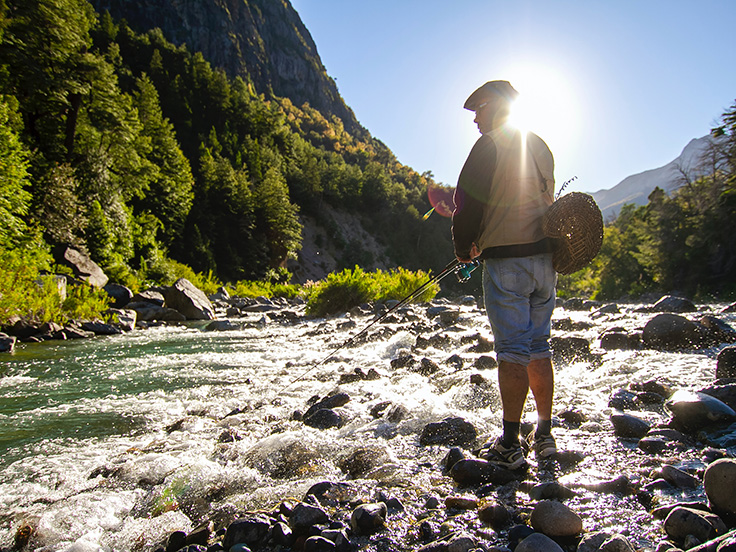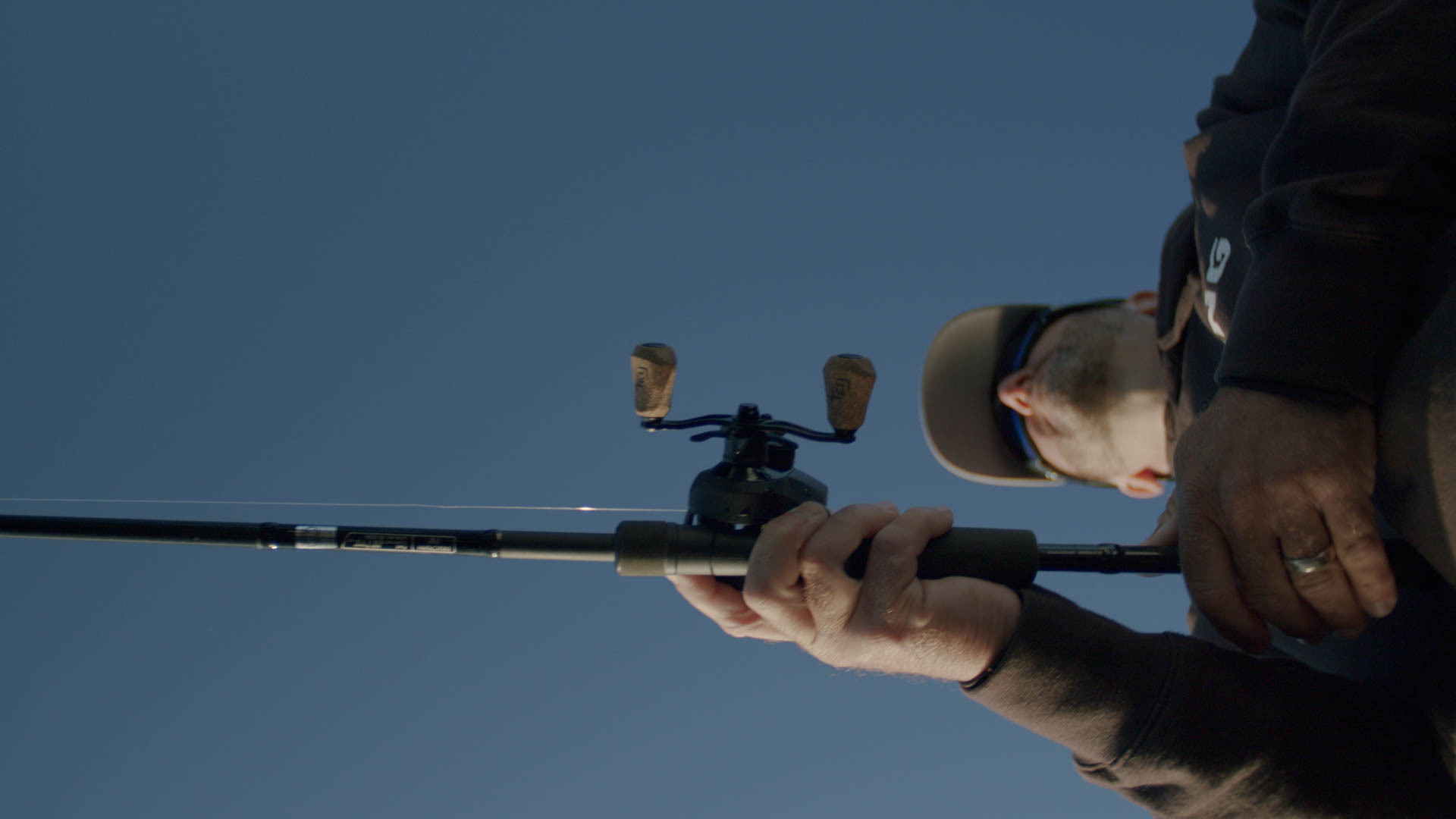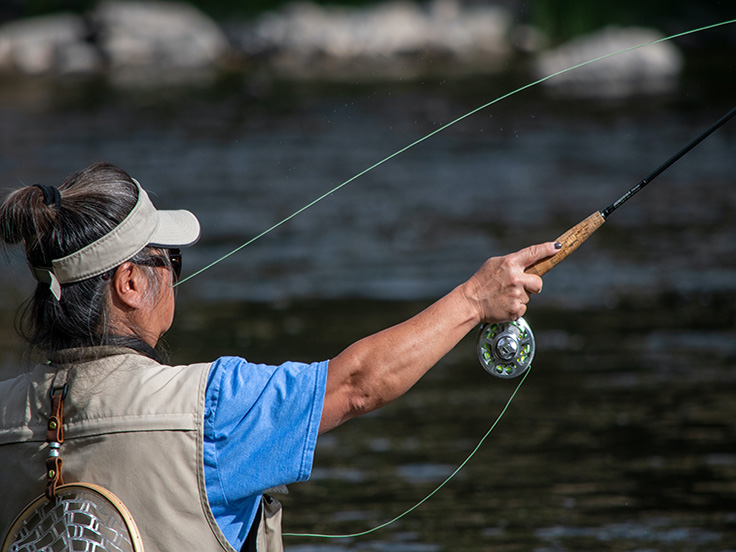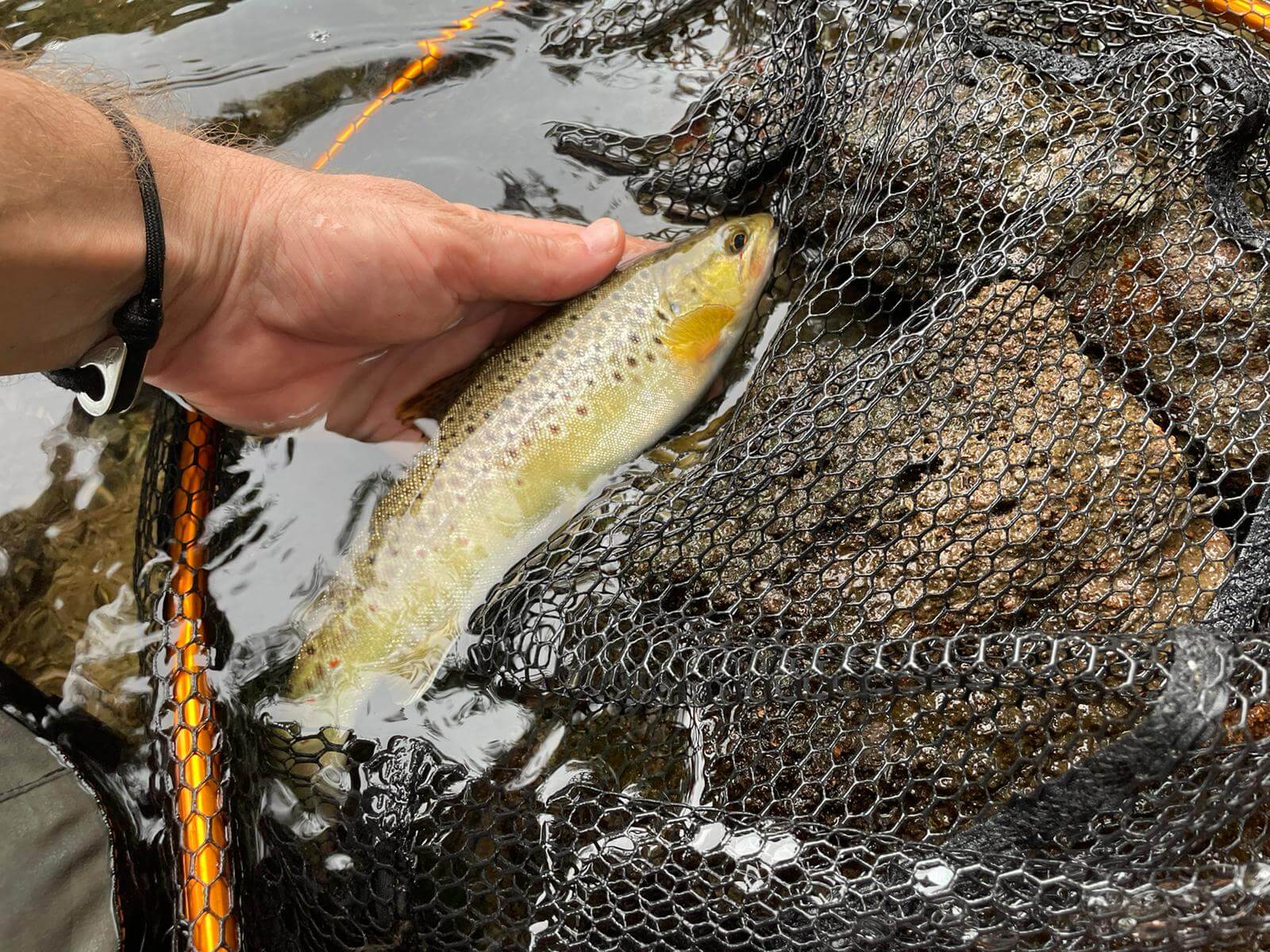 Trout fishing can be done in a variety of ways. You'll need line, a reel and a rod. Depending on the techniques used, your trout fishing rods will need to have very specific characteristics. Our extensive collection of trout fishing rods will ensure you find what you're looking for.
Trout fishing can be done in a variety of ways. You'll need line, a reel and a rod. Depending on the techniques used, your trout fishing rods will need to have very specific characteristics. Our extensive collection of trout fishing rods will ensure you find what you're looking for.
An ultra-light angler will need to adapt the size according to the river in which he will be fishing. They will also need to choose an action that matches the lures they will be using. The famous casting rod versus spinning rod dilemma applies here too. Your choice of rod and reel will depend on your technical preferences.
This fish can also be caught on a fly. This very special technique will require you to adapt your choices to your line, or rather your silk. The length of the rod will also be very important to adapt to the environment in which you are fishing. A bit of advice on the water should help you to quickly target the essentials.
You can also opt for a longer, more tapered carbon blank for fishing with natural bait. Tackle fishing and frame fishing offer different approaches and a fairly wide range. Tele-adjustable models are perfect for anglers in a wide range of conditions, thanks to length-adjustable elements.
In all cases, you need to pay close attention to the power range expressed in grams. This will ensure that your tackle is perfectly suited to your needs and that you can cast without risking the integrity of your purchase.
For lure fishing

A rod for stalking trout with lures can have very different technical characteristics. Depending on the area you're fishing, or the lure you're using, you'll have to make different choices.
The profile of the river will undoubtedly be the first point to take into account. Depending on its width, you'll opt for a longer or shorter rod. The aim is to be able to cover the whole of the watercourse with a single cast, without being too bothered by the vegetation along the banks.
The strength of the currents can also help you decide on the range of use. To fish properly, you'll need to fish heavier in strong currents. Conversely, summer fishing with insects or small lures will require fine rods capable of handling very light weights.
The angler will also need to decide on the action. The action will need to be different for spinners and jerkminnows of different sizes. The former will allow you to choose a regular action to absorb the vibrations, while the latter will require a drier tip to make the smallest strokes.
Don't hesitate to ask around once you're on the water. Enthusiastic anglers will always draw on their personal experience to give you advice that is often best suited to the very different situations you may encounter on the water.
Fly fishing

This is clearly the second most popular technique after lure fishing. It requires a little technical mastery to make the right choice for your purpose.
As trout fishing is practised in a variety of places (rivers, lakes, reservoirs, etc.), there are many technical components to take into account. That's why the range is regularly so wide and varied.
Once again, the length of the rod is of vital importance. It will allow you to lengthen your rod if you need to, or to slip easily into tight spots. You'll soon realise that it's difficult to make a single, versatile choice. Your travels and search for new spots will push you to own several models.
The power of the rod, which is indicated by the line take-up capacity. This is the line that will enable you to make your fly fly over the water. You'll find figures ranging from 2 to 12. For stalking salmonids such as trout, you should end up with lines ranging from 2 to 6.
You will then be left with the elements we look at for all other techniques. The quality of the carbon, the reel seat and the rings will all need to be known to ensure that the rod you are looking for matches your requirements. Casting is so important that neglecting all these aspects will weight to half-hearted experiences. Don't hesitate to invest.
Fishing with live bait

This is the fishing technique that can suit many anglers. It is fairly easy to use once you understand the principle of drifting. You need to follow the water veins and understand how the trout position themselves.
Generally speaking, you should opt for a rod longer than 3m. This will allow you to easily reposition your entire frame by passing under the rod, so that you can fish a large part of the river again.
The sound of the blank will also be important. You'll be using a fairly fine technique, with fine line and a few grams of weight, and you'll need to reconcile this finesse with the weight and length of your set. Choosing the lightest and most balanced possible will make it easier for you to control your hook and feel its every twitch.
As you will have realised, fish such as trout can be sought out and hunted in a variety of ways. Each technique has its own rod, and you will of course find even more subtleties within each first selection.
It's important to remember that what you're after most of all is the pleasure of finding the salmonid, and getting it to bite. This relentless quest to understand and immerse yourself in this aquatic environment is surely the greatest catch you'll ever make, the one that makes you one with your surroundings.
Our other articles on trout fishing:
